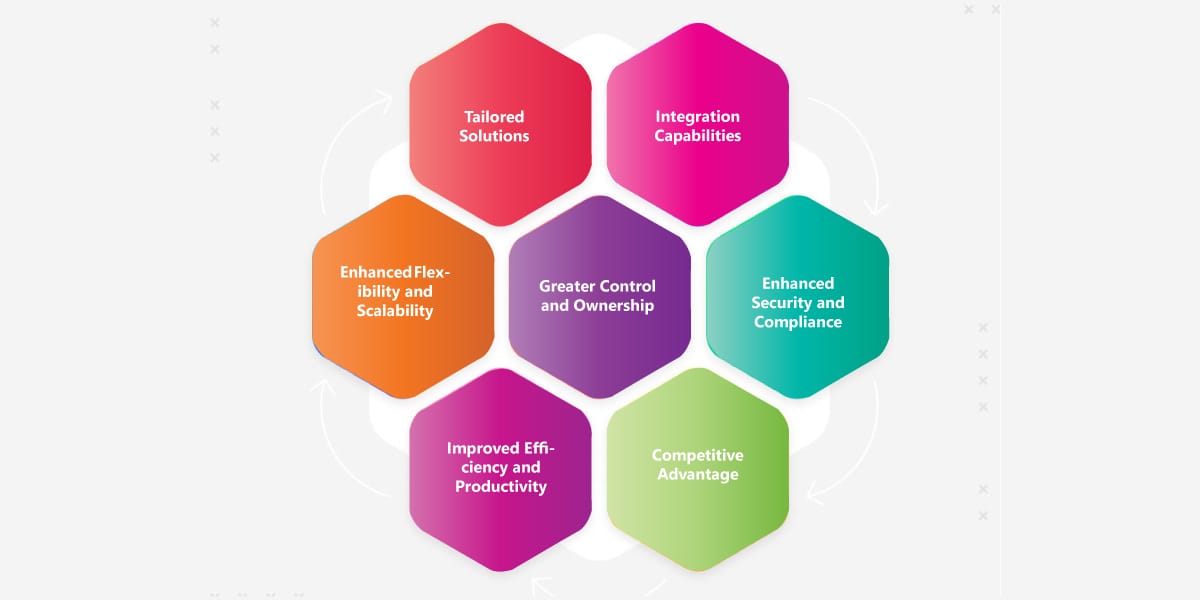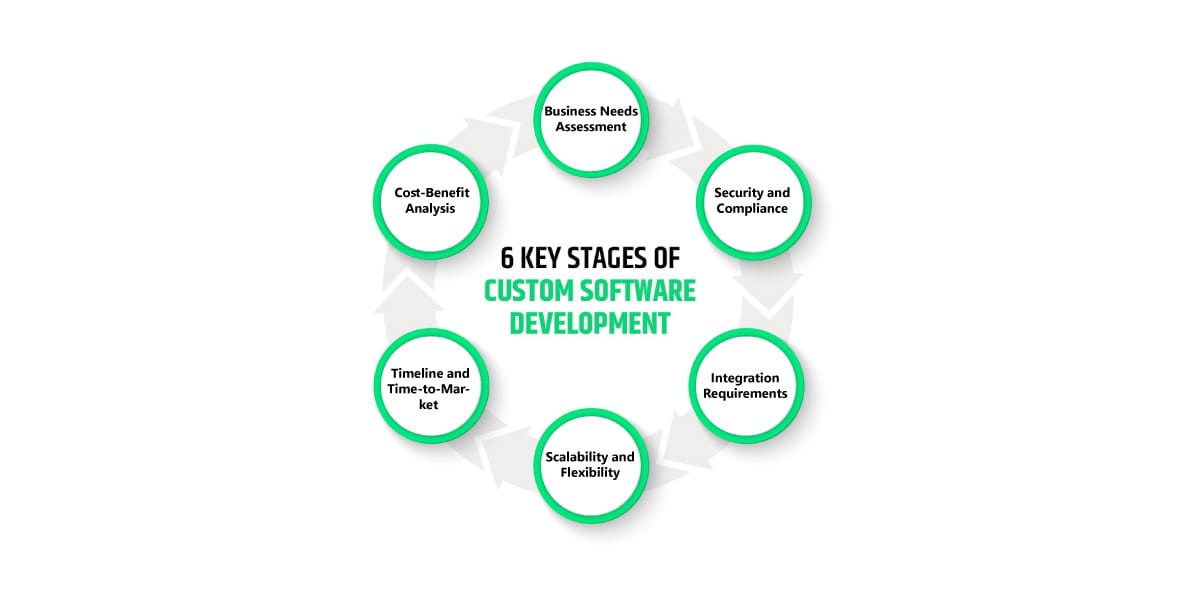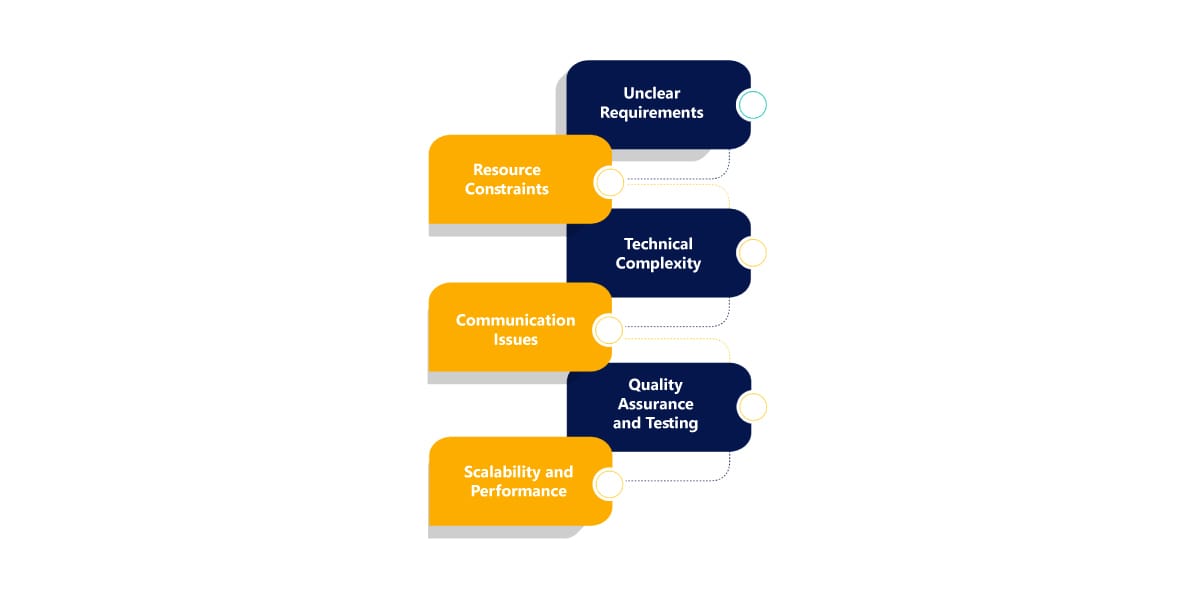Importance of Custom Applications
Custom applications are tailor-made to meet the specific requirements and objectives of a business or organization.

In today's fast and dynamic business environment, organizations are constantly seeking ways to gain a competitive edge, streamline operations, and meet the unique needs of their stakeholders.
One powerful solution that has emerged to address these challenges is the development of custom applications. Custom applications are tailor-made to meet the specific requirements and objectives of a business or organization.

What is the Importance of Custom Applications?
Custom applications offer several important benefits for businesses and organizations:
1. Tailored Functionality
Custom applications are built to meet specific business needs, providing functionality that off-the-shelf solutions might not offer.
2. Increased Efficiency and Productivity
Custom applications are designed to streamline processes and automate tasks, resulting in improved efficiency and productivity.
3. Scalability
Custom applications can be designed with scalability in mind. Whether it's accommodating a growing user base, expanding functionality, or integrating with other systems, custom apps can be adapted to meet changing needs.
4. Competitive Advantage
Custom applications can provide a competitive edge by enabling organizations to differentiate themselves from competitors. Businesses can stand out and attract customers or clients.
5. Enhanced Security
Custom applications offer greater control over security measures, allowing organizations to implement robust security protocols tailored to their specific requirements.
6. Integration Capabilities
Custom applications can be seamlessly integrated with existing systems and infrastructure, enabling organizations to leverage their investments in other software solutions.
7. Better Support and Maintenance
With custom applications, organizations have direct access to developers who understand the intricacies of the software.
8. Alignment with Business Goals
This alignment ensures that the software serves as a strategic asset, helping the organization achieve its broader business objectives.

Understanding Custom Application Development Services:
Understanding custom application development services is essential for businesses looking to harness the full potential of technology to address their unique needs and challenges.
1. Consultation and Requirements Analysis
The process begins with a thorough consultation between the development team and the client to understand their business objectives, challenges, and requirements.
2. Design and Architecture
Once the requirements are established, the development team works on designing the architecture and user interface of the custom application.
3. Development
With the design in place, the development team begins coding the custom application according to the specifications outlined in the requirements document.
4. Testing and Quality Assurance
Rigorous testing is conducted throughout the development process to identify and address any bugs, errors, or issues.
5. Deployment and Implementation
Once the custom application has been thoroughly tested and approved, it is deployed to the production environment.
6. Training and Documentation
Depending on the complexity of the custom application, training sessions may be conducted to familiarize users with its features and functionality.
7. Support and Maintenance
These services often include ongoing support and maintenance to address any issues, implement updates, and ensure optimal performance over time.

The motive behind custom applications?
The motive behind custom applications stems from the need for tailored solutions that precisely align with the specific requirements, workflows, and objectives of an organization.
1. Addressing Unique Business Needs
Every organization has its own set of challenges, processes, and objectives that may not be fully addressed by off-the-shelf software solutions.
2. Improving Efficiency and Productivity
Custom applications are built to streamline processes, automate tasks, and eliminate inefficiencies within an organization.
3. Enhancing User Experience
Custom applications can be designed with a user-centric approach, focusing on usability, intuitiveness, and accessibility.
4. Gaining a Competitive Edge
Custom applications enable organizations to stand out by offering unique features, functionalities, and experiences that set them apart from competitors. This can help attract customers, retain clients, and strengthen the organization's position in the market.
5. Optimizing Data Management and Analysis
Custom applications can be tailored to handle large volumes of data and provide advanced analytics and reporting capabilities.
6. Adapting to Changing Requirements
Custom applications offer flexibility and scalability, allowing organizations to adapt and evolve their software solutions along with their changing requirements. This ensures that the software remains relevant and effective in the long term.
7. Ensuring Security and Compliance
Custom applications can be built with robust security measures tailored to the organization's specific requirements and compliance standards.

Advantages of custom application development services:
Custom application development services offer a range of advantages for businesses seeking tailored software solutions to meet their specific needs and objectives.
1. Tailored Solutions
Custom application development services provide solutions that are specifically designed to address the unique requirements, workflows, and challenges of an organization.
2. Enhanced Flexibility and Scalability
Custom applications are highly flexible and scalable, allowing businesses to adapt and grow without being constrained by the limitations of off-the-shelf software.
3. Improved Efficiency and Productivity
By optimizing workflows and providing intuitive interfaces, custom applications enable employees to work more efficiently, resulting in increased productivity and output.
4. Competitive Advantage
Custom applications can provide a competitive edge by offering unique features, functionalities, and experiences that set businesses apart from competitors.
5. Enhanced Security and Compliance
Custom applications can be developed with robust security measures tailored to the organization's specific requirements and compliance standards.
6. Integration Capabilities
Custom applications can be seamlessly integrated with existing systems and infrastructure, enabling businesses to leverage their investments in other software solutions.
7. Greater Control and Ownership
With custom application development services, businesses have full control and ownership over the software solution.
8. Dedicated Support and Maintenance
Custom application development services often include dedicated support and maintenance to address any issues, implement updates, and ensure optimal performance over time.

How to Reduce Custom App Development Challenges?
1. Thorough Requirements Gathering
Invest time upfront in thoroughly understanding the project requirements, objectives, and constraints.
2. Clear Communication
Establish open and transparent communication channels between the development team and stakeholders.
3. Agile Methodology
Adopt an Agile development approach, such as Scrum or Kanban, to iteratively build and refine the custom application.
4. Prototyping and User Feedback
Develop prototypes or wireframes early in the process to visualize the application's functionality and design.
5. Experienced Development Team
Hire an experienced development team with expertise in custom application development. Look for developers, designers, and project managers with a proven track record of delivering successful projects and a deep understanding of relevant technologies and methodologies.
6. Robust Project Management
Implement robust project management practices to monitor progress, track tasks, and manage resources effectively.
7. Continuous Testing and Quality Assurance
Incorporate automated testing, unit testing, and continuous integration practices into the development process to identify and address issues early.
8. Adoption of Best Practices and Standards
Adhere to industry best practices, coding standards, and security guidelines throughout the development lifecycle.
9. Documentation and Knowledge Transfer
Maintain comprehensive documentation throughout the development process, including requirements, design specifications, test cases, and user manuals.
10. Post-Deployment Support and Maintenance
Provide dedicated support and maintenance services after the application is deployed to address any issues, implement updates, and ensure optimal performance. Establish service-level agreements (SLAs) and support channels to promptly address user feedback and resolve issues as they arise.

Key considerations before opting for custom application development:
1. Business Needs Assessment
Understand the specific needs and objectives that the custom application should address. It's essential to have a clear understanding of the problem you're trying to solve or the opportunity you're trying to seize.
2. Cost-Benefit Analysis
Evaluate the cost implications of custom development against potential benefits. Consider not only the initial development costs but also maintenance, support, and potential future upgrades.
3. Timeline and Time-to-Market
Assess the urgency of the project and the expected time to develop and deploy the custom application. Balancing speed with quality is critical, as rushed development may lead to compromises in functionality or security.
4. Scalability and Flexibility
Ensure that the custom application is designed to scale along with your business needs. It should be flexible enough to accommodate future changes and enhancements without significant redevelopment.
5. Integration Requirements
Consider how the custom application will integrate with existing systems, databases, and third-party services. Seamless integration is essential for smooth operations and data consistency.
6. Security and Compliance
Prioritize security measures to protect sensitive data and ensure compliance with relevant regulations such as GDPR, HIPAA, or PCI DSS. Implement best practices for authentication, authorization, and data encryption.
7. User Experience (UX) and Design
Focus on creating an intuitive and user-friendly interface that aligns with the expectations and preferences of your target audience.
8. Technology Stack Selection
Choose the right technology stack based on the requirements of the application, considering factors like performance, scalability, security, and the availability of skilled developers.
9. In-House Development vs. Outsourcing
Decide whether to build the custom application in-house or outsource development to a third-party vendor or a dedicated development team.

Common challenges in custom application development and how to overcome them:
Custom application development can present several challenges, but with proper planning and strategies, they can be overcome effectively. Here are some common challenges and ways to address them:
1. Unclear Requirements
Vague or evolving requirements can lead to scope creep, delays, and misunderstandings. To overcome this challenge:
- Invest time upfront in gathering and documenting comprehensive requirements.
- Use techniques like user stories, wireframes, and prototypes to clarify requirements.
- Establish a process for managing changes and obtaining stakeholder approval.
2. Resource Constraints
Limited budget, time, or skilled personnel can hinder development efforts. To address resource constraints:
- Prioritize project requirements and focus on delivering essential features first.
- Consider outsourcing certain tasks or components to external vendors or freelancers.
- Invest in training and skill development to enhance the capabilities of the development team.
3. Technical Complexity
Developing complex features or integrating with existing systems can pose technical challenges. To tackle technical complexity:
- Break down the project into smaller, manageable tasks and prioritize them accordingly.
- Conduct thorough research and feasibility studies to assess the technical viability of proposed solutions.
- Collaborate with experienced developers, architects, or consultants to address technical challenges.
4. Communication Issues
Poor communication among team members, stakeholders, or external partners can lead to misunderstandings and delays. To improve communication:
- Establish clear channels for communication and collaboration, such as regular meetings, email, or project management tools.
- Foster a culture of transparency, where team members feel comfortable sharing ideas, concerns, and feedback.
- Document decisions, action items, and project updates to ensure everyone is on the same page.
5. Quality Assurance and Testing
Inadequate testing and quality assurance practices can result in bugs, errors, and usability issues. To improve QA and testing:
- Implement automated testing frameworks and tools to streamline testing processes and improve test coverage.
- Conduct thorough testing at each stage of development, including unit testing, integration testing, and user acceptance testing.
- Involve stakeholders and end-users in testing activities to gather feedback and identify issues early.
6. Scalability and Performance
Failure to design for scalability and performance can lead to system bottlenecks and degraded performance over time. To address scalability and performance:
- Design the application architecture with scalability in mind, using scalable infrastructure components and distributed computing techniques.
- Conduct load testing and performance tuning to identify and address potential bottlenecks before deployment.
- Monitor system performance in production and optimize as needed to maintain scalability and responsiveness.
7. Security Concerns
Inadequate security measures can expose the application to vulnerabilities, data breaches, and compliance risks. To enhance security:
- Implement robust security controls, including encryption, authentication, and access controls, to protect sensitive data.
- Conduct regular security assessments and penetration testing to identify and remediate vulnerabilities.
- Stay informed about security best practices, industry standards, and regulatory requirements relevant to your application.

Maintaining and updating custom applications for long-term success:
1. Establish a Maintenance Plan
Develop a comprehensive maintenance plan that outlines how the application will be supported, updated, and maintained over time.
2. Regular Monitoring and Performance Optimization
Implement monitoring tools and performance metrics to track the health and performance of the application in real-time.
3. Security Updates and Vulnerability Management
Stay vigilant about security threats and vulnerabilities by regularly applying security patches, updates, and fixes to the application and its underlying components.
4. User Feedback and Continuous Improvement
Solicit feedback from end-users and stakeholders to identify areas for improvement and prioritize enhancement requests.
5. Version Control and Change Management
Implement version control systems and change management processes to track changes, revisions, and updates to the application codebase.
6. Documentation and Knowledge Transfer
Maintain up-to-date documentation that provides comprehensive information about the application's architecture, design, functionality, and configuration.
7. Regression Testing and Quality Assurance
Conduct regression testing whenever updates or changes are made to the application to ensure that existing functionality remains intact and that new features perform as expected.
8. Adherence to Standards and Best Practices
Follow established coding standards, design patterns, and best practices to ensure maintainability, scalability, and extensibility of the application codebase.
9. Adaptation to Technological Advances
Stay informed about emerging technologies, trends, and industry standards relevant to the application domain.
10. Budget and Resource Allocation
Allocate sufficient budget and resources for ongoing maintenance, support, and updates to the application.
Conclusion:
It's imperative to approach the decision with careful consideration and planning. The choice between in-house development and outsourcing should be made after evaluating factors such as expertise, resource availability, and budget constraints.
By prioritizing these considerations and investing in a well-thought-out custom application development process, businesses can unlock significant value, enhance operational efficiency, and gain a competitive edge in their respective markets.
